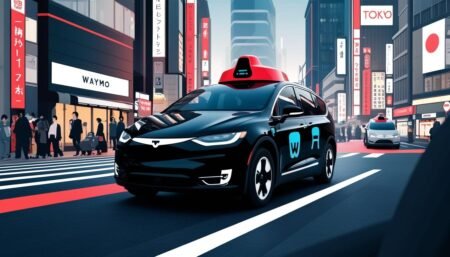In a significant strategic shift, GM announces it will cease funding for its Cruise autonomous vehicle unit, redirecting focus towards driver-assist technologies amid ongoing financial challenges.
General Motors (GM) announced on Tuesday, in a significant strategic shift, that it would exit the robotaxi business and cease funding for its Cruise autonomous vehicle unit. The decision comes amid ongoing financial challenges faced by the unit and a highly competitive market landscape for robotaxis. GM’s CEO Mary Barra acknowledged the substantial time and resources required to scale up the autonomous taxi business, which failed to generate expected returns.
Originally acquired by GM in 2016 with ambitious plans, Cruise had operated under the expectation of delivering a profitable fleet of robotaxis. GM invested approximately $2.4 billion in Cruise, acquiring 90% of the company from its investors, leading to over $10 billion in operating losses while revenue struggled to reach half a billion dollars, according to reports filed with the Securities and Exchange Commission. Despite aspirations for Cruise to generate $1 billion annually by 2025, the venture faced setbacks, including a controversial incident earlier this year in which a Cruise autonomous vehicle was involved in an accident that drew scrutiny and resulted in the suspension of its operating license by California regulators.
In response to the challenges, GM has opted to merge Cruise’s technical team into its operations, refocusing efforts on developing partially automated driver-assist systems for personal vehicles, such as the Super Cruise feature, which allows drivers increased autonomy. Barra emphasized the importance of leveraging Cruise’s existing software, AI, and sensor technologies in enhancing GM’s driver-assist capabilities, stating, “We want to leverage what already has been done as we go forward, and we think we can do that very effectively.”
This pivot reflects a broader trend in the automotive industry, where giants like Ford have previously disbanded autonomous initiatives after determining a lack of clear profitability. Nonetheless, several companies continue to pursue advancements in autonomous vehicle technology. For instance, Alphabet’s Waymo is expanding its robotaxi services and plans to test its driverless Jaguar vehicles in Miami next year. The company has also opened its robotaxi services in an 80-square-mile area of Los Angeles and is set to launch fleets in Atlanta and Austin in partnership with Uber.
Moreover, Tesla, under CEO Elon Musk, is aiming to deploy fully autonomous Models Y and 3 vehicles without human drivers by next year, despite concerns raised by investigations into its “Full Self-Driving” system, particularly regarding performance under low visibility conditions.
As GM restructures Cruise, it aims to decrease expenditures by over $1 billion annually. The unit, which currently has around 2,300 employees, will maintain its presence in San Francisco. The precise impact on job levels remains uncertain until the restructuring is finalized next year. Following the announcement, GM shares experienced an increase of about 3% after close of trading, reflecting a year-to-date rise of approximately 47%.
Source: Noah Wire Services
- https://tech.slashdot.org/story/24/12/10/2318201/gm-exits-robotaxi-market – General Motors’ decision to exit the robotaxi business and cease funding for its Cruise autonomous vehicle unit due to financial challenges and a competitive market.
- https://www.cbsnews.com/sanfrancisco/news/gm-stop-funding-troubled-cruise-autonomous-vehicles-robotaxis-san-francisco/ – GM’s acquisition of Cruise in 2016, the substantial investment, and the operational losses faced by the unit.
- https://www.cbsnews.com/sanfrancisco/news/gm-stop-funding-troubled-cruise-autonomous-vehicles-robotaxis-san-francisco/ – The incident involving a Cruise autonomous vehicle in an accident and the subsequent suspension of its operating license by California regulators.
- https://www.business-standard.com/world-news/gm-to-retreat-from-robotaxis-stop-funding-cruise-autonomous-vehicle-unit-124121100035_1.html – GM’s decision to merge Cruise’s technical team into its operations and refocus on developing partially automated driver-assist systems like Super Cruise.
- https://tech.slashdot.org/story/24/12/10/2318201/gm-exits-robotaxi-market – GM CEO Mary Barra’s comments on the time and resources needed to scale the autonomous taxi business and the decision to focus on driver-assist systems.
- https://www.cbsnews.com/sanfrancisco/news/gm-stop-funding-troubled-cruise-autonomous-vehicles-robotaxis-san-francisco/ – The integration of Cruise’s technical team with GM’s broader tech team to work on advanced driver-assist systems.
- https://www.business-standard.com/world-news/gm-to-retreat-from-robotaxis-stop-funding-cruise-autonomous-vehicle-unit-124121100035_1.html – The financial implications of GM’s decision, including the reduction in annual expenditures by over $1 billion.
- https://www.cbsnews.com/sanfrancisco/news/gm-stop-funding-troubled-cruise-autonomous-vehicles-robotaxis-san-francisco/ – The impact on Cruise employees and the maintenance of its presence in San Francisco despite the restructuring.
- https://www.business-standard.com/world-news/gm-to-retreat-from-robotaxis-stop-funding-cruise-autonomous-vehicle-unit-124121100035_1.html – The increase in GM shares following the announcement and the year-to-date performance.
- https://www.cbsnews.com/sanfrancisco/news/gm-stop-funding-troubled-cruise-autonomous-vehicles-robotaxis-san-francisco/ – The broader industry context, including other companies like Alphabet’s Waymo and Tesla continuing to pursue autonomous vehicle technology.
- https://tech.slashdot.org/story/24/12/10/2318201/gm-exits-robotaxi-market – The competitive landscape of the robotaxi market and the reasons behind GM’s decision to exit it.
















